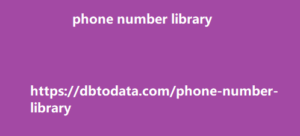When something is “encoded”, this translates to placing a file purely onto another. A person that prefers to carry an object around that limits his/her movement in the process. There are currently no means of encoding a media file like an image or a video into your HTML file. But on the other hand, it’s possible to encode CSS and JavaScript codes into an HTML file. these codes into your HTML file contributes to additional lines of code. And extra lines of code allow your HTML file to reach the 15MB Googlebot crawl limit. The Truth About the 15MB Googlebot Crawl Limit It is a fact that a web page builder will almost always NEVER reach the 15MB Googlebot crawl limit that is set for indexing an HTML file.
In a tweet by John Mueller, a search advocate
at Google; Reaching the 15MB in your HTML file is equivalent to roughly 16 novels of which the manuscript is transferred to an HTML file. Sample Of An HTML File Worth 15MB By John Mueller Source: Twitter From a developer’s perspective, it’s considered an absurd amount of lines of code to place in your HTML. There will always be efficient means of building a web page, especially with site speed being considered a huge factor in website ranking. If one is curious about testing how big an HTML file is for a web page, consider using the tool DebugBear’s HTML Size Analyzer.
Googlebot’s 15MB crawl limit and Site
speed Being unable to reach the 15MB Googlebot crawl limit shouldn’t be an excuse to ignore site speed optimizations for a website. Google considers user experience as one of the biggest factors affecting website rank. This involves how fast can a web browser load a web page’s resources and elements. The crawl limit is meant to serve as a guide for indexing and does not guarantee rank. The media and resources file not being factored into the crawl limit is not an excuse to ignore the resources a web browser loads. Site speed should always be considered when referencing media or resources on your website.
Learn more about Site Speed Optimization
here. the global influencer marketing market size is at $13.8 billion. Are you ready to tap into this market and find the right influencers for your business? In this blog post, we will walk you through a step-by-step guide on how to find the best influencers for your brand. We’ll cover everything from defining your goals to tracking the progress of your campaign. Define your goals The first step in finding the right influencers is defining your goals. Here are some questions to answer: Why do I want to work with influencers? What am I hoping to achieve? Do they align with the goals I have set up in my marketing plan? How much are we willing to spend for this collaboration? quarterly marketing plan landing page Download: Quarterly Marketing Plan By answering these questions, you ensure that it is crystal clear what your goals are and what role they play in your overall marketing plan, how the influencers can help you achieve them, and what you can offer in return for a fair collaboration.
For example, let’s say you’re in the health
and fitness niche and your target belize phone number library audience are moms. Let’s answer the questions above. Why do I want to work with influencers? The health and fitness niche is competitive and most of our competitors offer supplements or vegan alternatives. I offer a monthly subscription service where the customer will get a supply of vegan frozen meals every week. This can break into the market faster if I tap the right people to test and review them. What am I hoping to achieve? Greater visibility and word-of-mouth marketing for my business. Do they align with the goals I have set up in my marketing plan? Yes.
I aim to sell at least 50 subscriptions for the
first month to break even. Influencer marketing plays a significant role in achieving this goal. How much are we willing to spend for this collaboration? $350 for a YouTube review with additional fees for Instagram and Tiktok posts depending on engagement and follower count. Check industry pricing Before you even start looking for influencers, you need to understand how the fees work. Fee structures for influencers may differ from country to country. For example, a fee structure (or rate card) can look like this: influencer rate card Or you can check industry rates and how they’re computed such as this guide by Get Hyped if you’re in the US.
Then edit your answer to the last question
(How much are we willing to spend and feeling useless half the for this collaboration?) based on your findings. This ensures that: You understand the type of influencer you can afford to collaborate with (nano, micro, etc.) so you can narrow down your research. Negotiations can be smoother because you already have an idea of how much you’re willing to spend and you understand how the fees work—haggling prices isn’t a good look for your brand because these influencers work hard to build and engage their audience base. Research to find relevant influencers in your niche Once you have defined your goals and checked the pricing, it’s time to find influencers.
Use social media listening tools Social
media listening tools are a great way bulk data to find relevant influencers. These platforms allow you to track mentions of competitor brands so you can see who they’re working with. You can then look for influencers in that circle. You can also use social media listening tools to track relevant hashtags. This is a great way to find influencers who are talking about topics that are important to your business. Some of the most popular social media Monitoring Identify relevant hashtags As mentioned, you can find relevant influencers by identifying relevant hashtags.

